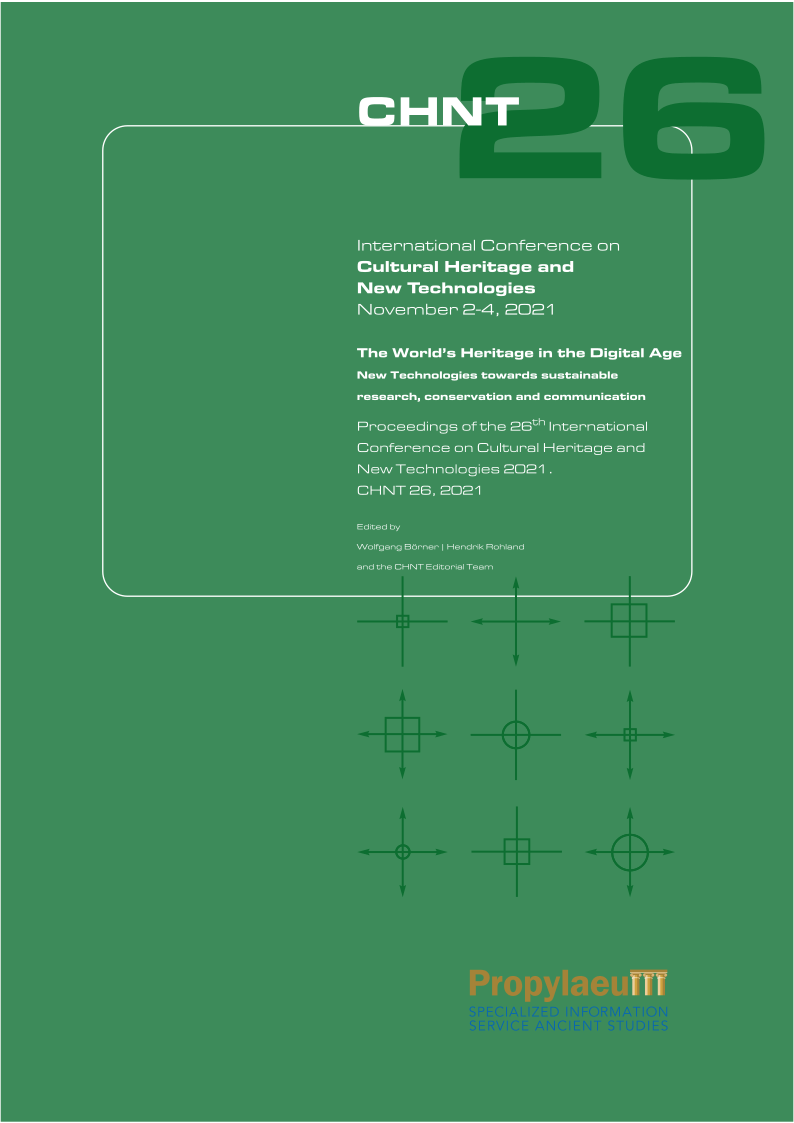Virtual Reality Application Keltenwelt am Glauberg
New approaches in VR for archaeological sites
Keywords:
Archaeology, Celtic Settlements, Virtual Reality, Virtual ReconstructionsAbstract
Virtual (VR) and Augmented Reality (AR) have long moved from fancy tools used to solely impress an audience to important means that enable a better understanding of archaeological sites within their environs. The VR application of the museum of the “Keltenwelt am Glauberg” aims to add a new level of information by using the technical abilities of modern VR devices to explain the route that archaeologists have taken to reconstruct different views of a past long gone in an intentionally non-photorealistic but honest style that shows different solutions for reconstructions and gives room for the users’ own thinking and interpretation. The great potential of VR in the form of immersion and conveying a feeling of presence, was also used to design new experiential spaces on a 1:1 scale that can maximally serve the communication of archaeological research, methods and results, while at the same time enabling new sensory and spatial experiences. The result – which will be made available for Oculus Quest 2 devices – will be used for entertaining educational purposes in the museum, it also is the basis for further data and models that have been on display in exhibitions, presentations, publications and last but not least in an AR app that helps to explore and understand the Early Iron Age hillfort on the Glauberg.
References
Eide, Ø., Schubert, Z. and Wieners, J.G. (2019). 'Modelling. Virtual. Realities. Virtual Reality as a transformative technology for the humanities', in: Intermedial Practice and Theory in Comparison: The Fourth International Symposium on Intermedial Studies, Hangzhou, China, 15–17 November 2018. https://doi.org/10.5281/zenodo.3909344 (Accessed: 1 September 2021).
Grellert, M. (2018). 'Virtual Reality im Kontext von Architektur und Digitaler Rekonstruktion - Überlegungen zu Po-tentialen, Grenzen, Randbedingungen bei Ausstellungen', in Bienert, A.et al. (eds.) Konferenzband/Proceedings EVA Berlin 2018 : Elektronische Medien & Kunst, Kultur und Historie : 25. Berliner Veranstaltung der internatio-nalen EVA-Serie. Berlin: Staatliche Museen zu Berlin, pp. 198-203.
Miera, J. (2020). „Quellendeutung“. praehistorische-archaeologie.de. 20. September 2020. Available at http://www.praehistorische-archaeologie.de/wissen/grundlagen/archaeologische-quellen/quellendeutung/. (Ac-cessed: 1 September 2021).
Posluschny, A.G. and Beusing, R. (2019). 'Space as the Stage: Understanding the Sacred Landscape around the early Celtic Hillfort of the Glauberg', in Papantoniou, G., Sarris, A., Morris, C. E. and Vionis, A. K. (eds.) Un-locking Sacred Landscapes: Digital Humanities and Ritual Space, Open Archaeology 5, Special Issue (1), pp. 365–382. Available at https://www.degruyter.com/view/j/opar.2019.5.issue-1/opar-2019-0023/opar-2019-0023.xml (Accessed: 26 August 2021).
Schreg, R. (2013). Archaeologik: Von der vergangenen Realität zur rekonstruierten Realität (Archäologische Quel-lenkritik I). Archaeologik (blog). 12. Januar 2013. Available at https://archaeologik.blogspot.com/2013/01/von-der-vergangenen-realitat-zur.html (Accessed: 1 September 2021).
Downloads
Published
Conference Proceedings Volume
Section
License
Copyright (c) 2025 Marc Grellert, Ruth Beusing, Axel G. Posluschny, Norwina Wölfel

This work is licensed under a Creative Commons Attribution-ShareAlike 4.0 International License.
The CHNT older Proceedings are licensed under the creative commons license CC BY-NC-ND 3.0.
From the issue 26 on, they will be licensed under the creative commons license CC-BY-SA 4.0


